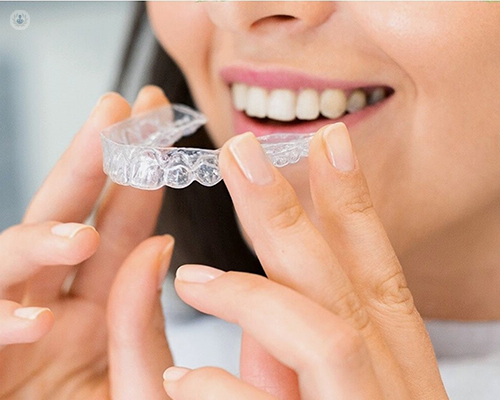Invisalign: The invisible method for teeth alignment
Autore:Having orthodontic problems, such as dental crowding, uneven bites and gaps between the teeth, can mean it is harder to keep teeth healthy and have good oral hygiene. As a result, some people may choose to try Invisalign, a modern invisible aligner system that corrects irregularities in the teeth’s positioning.
Here to provide an expert insight into Invisalign is Dr Anne Gormley, leading dental practitioner and clinical head.

What is Invisalign?
Invisalign is a clear aligner system that is used to straighten crooked teeth.
In most cases, the teeth are scanned and a computer-generated treatment plan (referred to as a ‘Clincheck’) is produced. A clinician then modifies the ‘Clincheck’ to suit the patient’s overall requirements before the set of aligners are constructed. The clinician later follows the prescription, adding the attachments to the teeth and carrying out the relevant interproximal reduction, which is the term for the removal of tooth tissue.
The patient will change his/her aligners every one to two weeks, wearing the aligners at least 22 hours every day.
Why might people choose to have Invisalign? Who is a suitable candidate?
The majority of people who decide to straighten their teeth with Invisalign are adults with mild to moderate crowding, a condition that develops when there is insufficient space for the teeth to fit properly. It is extremely common in people who previously had traditional orthodontics carried out but stopped wearing their retainers at night, causing their teeth to relapse.
If crowding is very severe, the teeth will take more weeks to align with Invisalign. In some cases, traditional braces will still be the treatment of choice.
Very often, patients choose to have Invisalign when they are in their twenties in time for their wedding or their graduation. In either case, it is advisable to be over the age of 18 before embarking on the course of Invisalign treatment.
Invisalign is also often required to reduce periodontal disease in the gums. This is because it is easier to keep the gums healthy if the teeth are not overlapped.
Are there any risks involved with Invisalign?
The main risks involved in undertaking Invisalign treatment include the need to remove some of the sound tooth tissue to create space between the teeth (interproximal reduction). This may lead to sensitivity of the teeth. At the end of treatment, interproximal reduction may result in black triangles at the gum margins, which may spoil the cosmetic result.
There is also a risk of gum inflammation during the treatment, and a possibility that there may be some gum recession - although this is less common.
When are full results visible?
Most treatments that are carried out using Invisalign produce excellent within six months, which is the main unique selling point of this treatment.
If you wish to try Invisalign, or simply wish to know more about this aligner system, don’t hesitate to visit Dr Gormley’s Top Doctors profile today.



